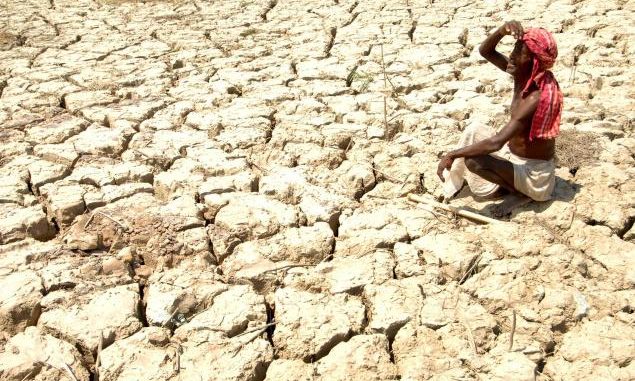
By Shishir Asthana
New Delhi : TV channels have been flashing images of farmers spilling milk and dumping fruits and vegetables on Maharashtra roads. Their main demand is for their loans to be waived, in line with similar moves in other states like Uttar Pradesh.
This is sheer blackmail, and cannot be condoned, but it’s to be noted that all political parties are to be blamed – those who exploit the farmers’ wrath and those in government who have done precious little to improve the financial condition of those who till the soil.
Granted, some good steps have been announced by the government on the agriculture front like soil cards, e-National Agriculture Market (e-NAM), insurance scheme and direct benefit transfers, to name a few. But these are all works-in-progress. They have not yet been rolled out completely or their benefits are not yet visible.
The government uses the agriculture crop output data as a tool for measuring its policy performance. Accordingly, ruling politicians have patted themselves on the back for achieving record production in 2016 and shared credit for good output with the better-than-average rainfall.
The way things are moving in the agriculture sector, the government needs to worry more about a good monsoon rather than a poor one.
A good monsoon leads to a bumper crop which, in turn, pushes prices lower. Every year in some state or the other we hear of farmers dumping vegetables on the roads as the pricing is not remunerative. Banks and moneylenders then descend, expecting the farmer to pay up by selling their produce. In case of a poor monsoon, the farmer can at least claim insurance and raise his hands when the banker comes knocking.
One of the other demands of the agitating farmers is the implementation of the MS Swaminathan Committee recommendations. Of the many things that the commission suggested, the agitators are clinging to one recommendation: ensuring 50 percent return over weighted cost of production.
The government is in the process of implementing many of the recommendations like issuance of soil card, irrigation, Kisan Credit Cards, crop insurance etc. But the more contentious ones where implementation would pinch the government finances have been left out.
The recommendations talk of introducing a social security net with provision for old-age support. There is a cost to this, but if the government wants to prevent migration from rural India and make the younger generation take to farming, it will have to ensure that the farmer will be taken care of if he is unable to till his land.
Similarly, a minimum return has to be ensured to the farmer. Though it may not be as high as 50 percent, it should be more than enough for him to recoup his costs and live a decent life.
The government is in the process of freeing up the economy from the clutches of traders to ensure better rates for farmers. But most of the farmers still go to the local trader rather than selling their goods in far-flung cities or selling it by using e-NAM to unknown consumers. The problem is that many traders are also suppliers of inputs and extend big credit facilities to the farmers; it is difficult for the farmer to just end these relationships.
A farmer with a small patch of land is not bankable for most of our banks. He prefers to go to the local moneylender and ends up paying exorbitant rates. If he is lucky with a good crop and a good price he repays the money, if not, he resorts to taking his life. This is because paying compound interest on a money lender’s loan is a more painful and slower death than that from consuming the pesticides he uses in his farm. Microfinance companies with their high interest rates are a milder version of the money lender.
If the government is really keen on improving the health of farmers and agriculture in India it would need to think in terms of returns to the farmer. Government never leaves an opportunity to highlight the fact that it is working to double farm income over the ‘next few years’. But the period is a moving target and the milk and vegetables on the roads are a clear indication that it has lost the plot.
All it needs to do to change the system is look at the prosperous farmers in the country. The most prosperous farmers are either those growing sugarcane or those growing grains. In both these cases the government ensures a minimum price for the produce, irrespective of the quantity.
What a farmer needs after months of toiling in the sun is to take some money back home when he sells his output in the market. Visibility of that money will make him search for ways to increase his production and reduce his cost. Our farmers are smart enough to adapt to technology when it comes to growing their crops, but what they cannot cope with is price fluctuations.
Having silos and cold storages can help as farmers would be able to sell at better prices, but most farmers do not have the time to wait for the market price to improve.
Rather than fall in the repeated trap of loan waivers, guaranteeing a higher price for output – a burden shared by the entire population for the greater good — would be a better and meaningful reform. It would lead to higher food inflation but that would also lead to much higher rural consumption and give a fillip to economic growth.

Leave a Reply